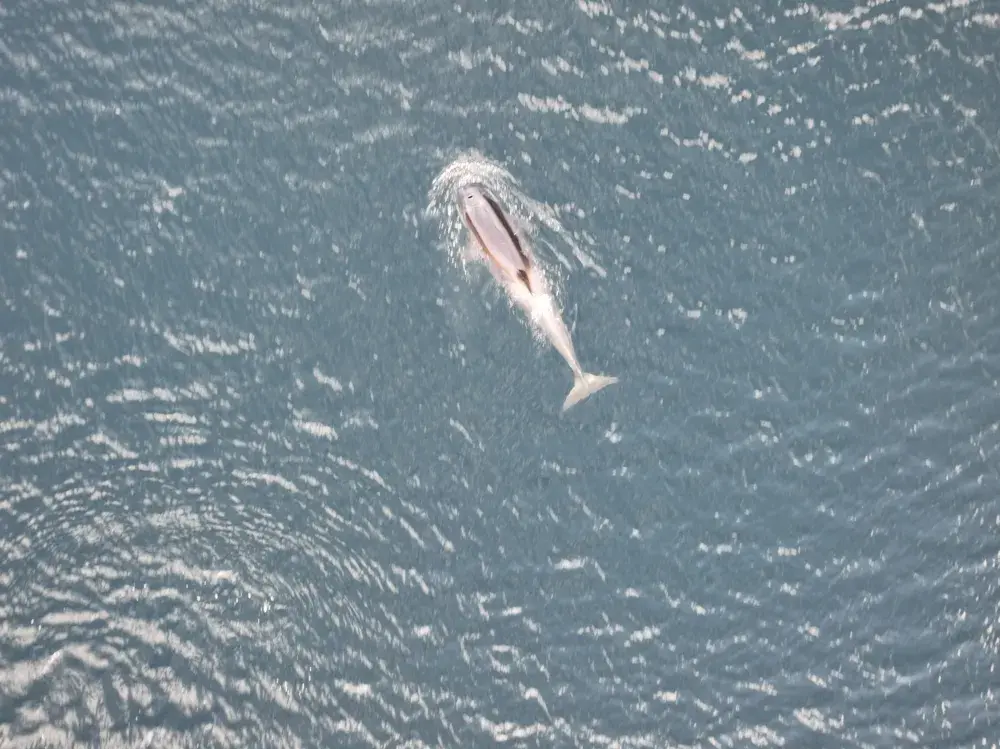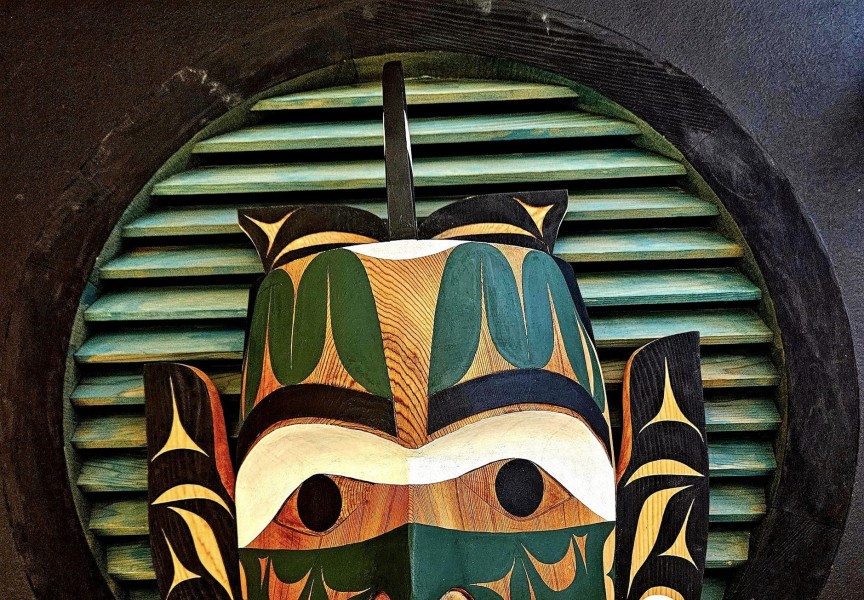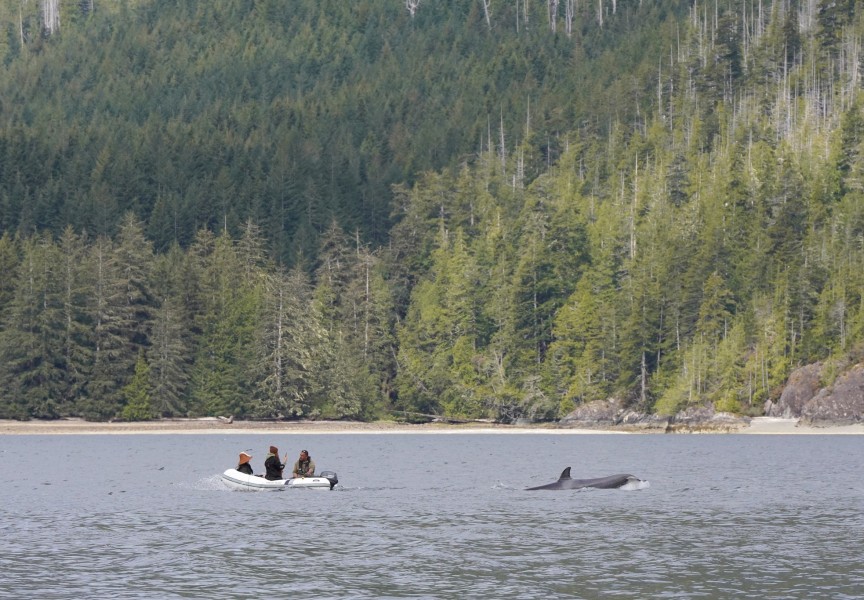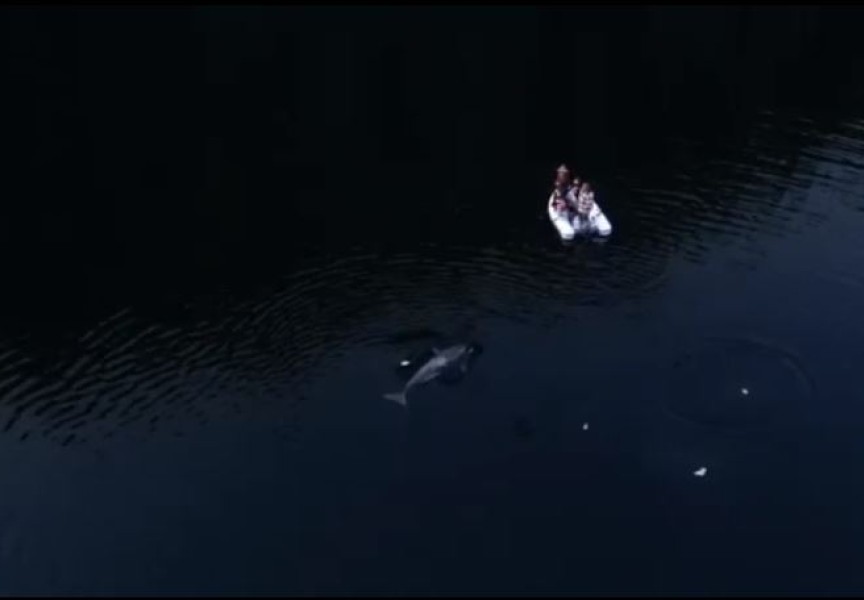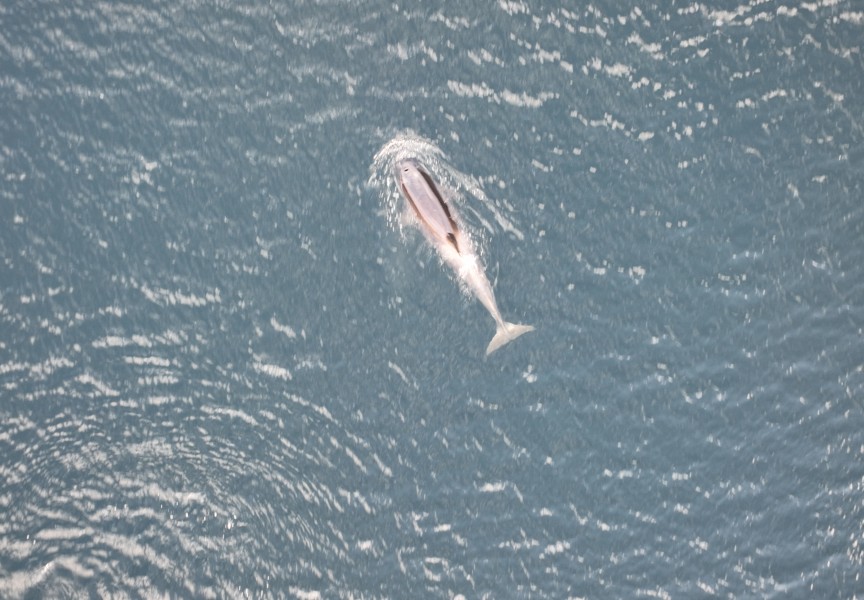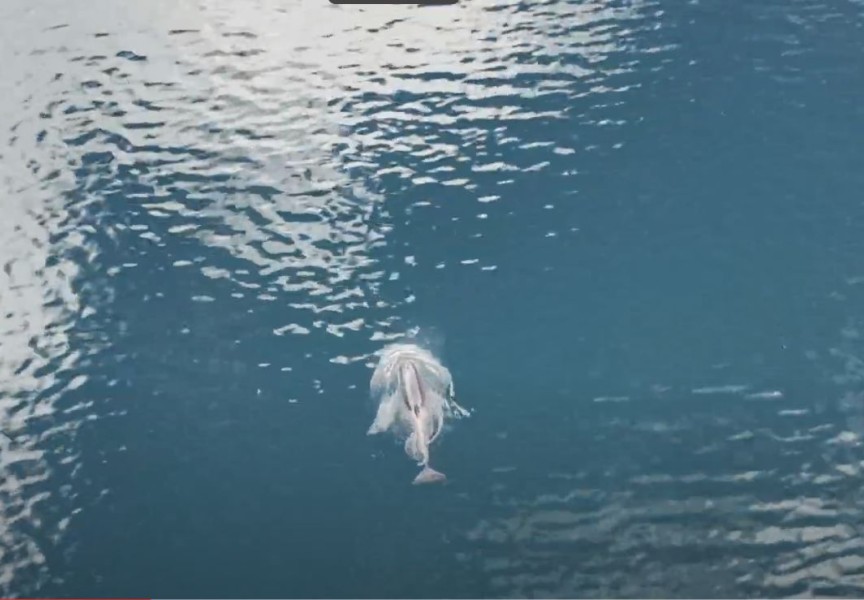The northern communities are waking up to the exciting and happy news that kʷiisaḥiʔis (kwee-sa-hay-is), the orphaned baby orca, has left the lagoon that she has been her home since mother died in late March.
“Today the community of Zeballos and people everywhere are waking up to some incredible news and what can only be described as pride for strength this little orca has shown,” said Chief Simon John of Ehattesaht.
In a written statement released on the morning of April 26, 2024, John stated kʷiisaḥiʔis, which means Brave Little Hunter, swam out of the lagoon near Zeballos, BC at 2:30 a.m. during high tide. “On a clear and glass calm, star filled night, Kwee-sa-hay-is swam past the sand bar her mother passed away on, under the bridge, down Little Espinosa Inlet and onto Esperanza all on her own,” he wrote.
kʷiisaḥiʔis and her mother first entered the lagoon on March 23, 2024. The Biggs (transient) killer whales were likely hunting seal, a staple of their diet. The mother whale became stranded on a sandbar as the tide quickly receded in the shallow lagoon. Sadly, she drowned, despite valiant efforts of local community members to save her.
A necropsy revealed that the mother was nursing her daughter and was pregnant with another female orca.
Efforts to save the baby whale began immediately as Ehattesaht and Nuchatlaht First Nations along with DFO’s Marine Mammal Response and Bay Cetology made plans to bring in equipment to lift the 2-year-old whale out of the lagoon after attempts to lure her out and under a bridge failed. But attempts to corral the highly intelligent little whale failed.
By mid-April, the orphaned whale started to show early signs of malnourishment. She had been observed eating ducks and bait fish. Ha-Shilth-Sa reported that kʷiisaḥiʔis began accepting seal meat that was tossed into lagoon from a distance. The seal meat was donated by Nuchatlaht First Nation.
On the evening of April 25, kʷiisaḥiʔis, accepted another meal of seal meat and was observed playfully breaching out of the water. In the wee hours of April 26, kʷiisaḥiʔis lived up to her name, given to her by the Ehattesaht, and bravely swam under the bridge and out toward the open ocean.
"After an evening of feeding her the team of Rob John, Judea Smith, Ashley John, and Victoria Wells from Ehattesaht and Nuchatlaht, along with DFO’s Marine Mammal Response and Bay Cetology were treated to a long night of kʷiisaḥiʔis breaching and playing at the end of the lagoon near the causeway bridge,” said Chief John in a statement.
“And after most everyone had left to get some sleep the small group who remained stood as witnesses to watch her swim under the bridge and down the inlet,” John continued.
Those that witnessed the magical event must have been elated.
John said the team later found her in Espinosa Inlet and followed her from a distance as she moved toward Esperanza Inlet proper.
The First Nations and DFO are asking people to avoid the area and the whale as she makes her way down the inlets toward the open ocean.
“With this part of the challenged solved by kʷiisaḥiʔis herself, every opportunity needs to be afforded to have her back with her family with as little human interaction as possible,” said John.
He went on to say that the little whale will be encouraged to head out toward the open ocean where it is hoped that the Brave Little Hunter’s calls will now be heard by her family. There will be increased patrols and protective measures taken to ensure that she has no contact with boats or people.
“Events like these have a deeper meaning and the timing of her departure will be thought about, talked about and felt for generations to come,” said John.
On behalf of his people, he thanked everyone who has been with them for the first part of this journey. “We are deeply moved and eternally thankful,” he said.

